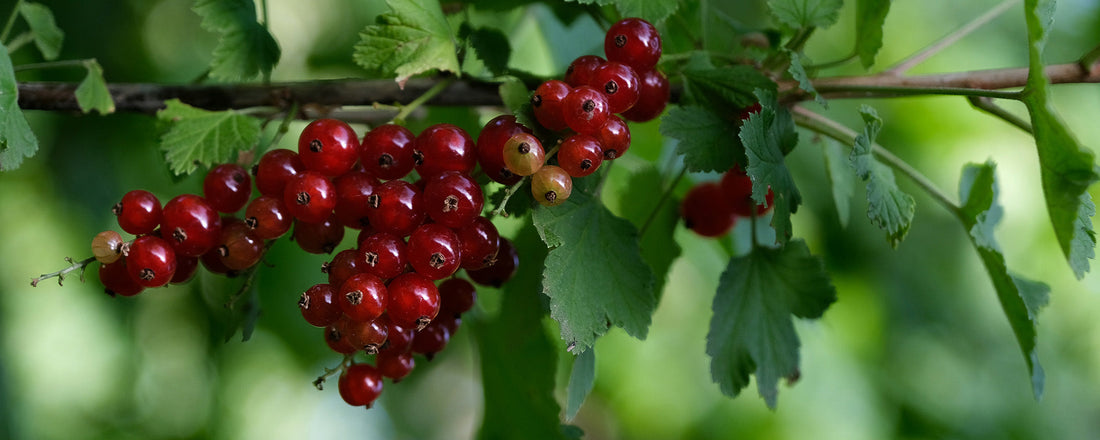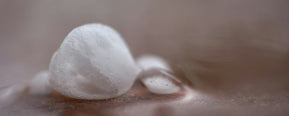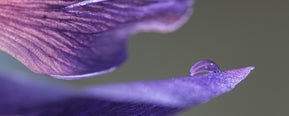Exploring the Scent of Red Currant in Perfumes
The tart and luminous fruit note holds a fascinating place in perfumery.
It is bright yet subtle, familiar yet elusive, capturing the imagination of perfumers and fragrance connoisseurs alike.
In this article, we explore its fragrance profile in depth, trace its botanical and cultural origins, uncover how it is recreated for perfumes, and reveal why Buchart Colbert, an Indie Perfume House, embraces this note as a defining signature in the Eau de Parfum L’Hantise.
What Does Red Currant Smell Like?
Red currant has a zesty, sun-kissed fragrance like a burst of morning sun, with a core fragrance that blends tartness and velvety green undertones. It introduces a tangy acidity perfumers love to use in fragrance composition.
Frequently used as a top note, red currant bursts onto the scene with a lively quality, drying down to reveal deeper layers beneath.
Red currant in perfumery exists as a fruit accord of citrus sourness, distinguishing it from sweeter berries.
Key scent characteristics:
- Tartness: Zesty freshness arousing the senses
- Brightness: A warm, sun-ripened quality that evokes fresh radiance
- Green Nuances: Delicate herbal nuances that anchor the fruitiness in earthy reality
- Contrast: The combination of pungency and subtlety, offering a rich experience
Perfumers use red currant when they wish to introduce lightness and purity into a composition.
Red currant acidity cuts through heaviness in the same way that introducing a violin balances the weight of lower instruments in a symphony.
Used in moderation, it builds an olfactive composition where freshness softly deepens, complementing florals, woods, or ambers.
The Origin of Red Currant in Perfumery
Red currant has woven its way into the perfumery tapestry, infusing it with a sour tartness to elevate scent molecules. Its transition from natural fruit to perfumery note is an alchemy of botanical heritage and creative imagination.
Botanical & Cultural Context
Red currant (Ribes rubrum) belongs to the Grossulariaceae family.
Native to Europe and western Asia, the plant has been cultivated since the Middle Ages, prized for its resilience and for the clusters of translucent crimson berries it produces each summer. Off the garden path, red currant became a cultural icon for brightness and purity.
In the kitchen, its pungency balances sweetness in jam, sauces, and desserts, a refined contrast to rich flavors. Herbal medicine utilizes the berry for its stimulating and antioxidant properties.
In perfumery, the same tartness is retained as a fragrance that represents youth, vigor of spirit, and vitality. Where gourmand berries may lean toward comfort and indulgence, red currant captures a fleeting freshness that feels refined and delicate.
Extracting the Red Currant Scent
In contrast to other popular perfume ingredients such as rose or jasmine, red currant is neither cold-pressed nor distilled. The fruit is fragile, and its volatile aroma compounds degrade quickly when processed.
As a result, red currant is usually compounded as a blend of multiple fruit notes.
Perfumers blend artificial molecules and plant extracts, over-layering sour, fruity, and greenish hues to construct the illusion of freshly picked berries.
How to Experience Red Currant in Perfume?
The magic of red currant is most evident on the very first spray, where its tart brightness bursts forth like an opening burst of an olfactory symphony.
This top note creates a first impression of freshness, blending citrus-like bitterness with faint green notes to stimulate the senses.
As the fragrance unfolds, red currant transitions through the heart, softening into a harmonious blend that supports floral or herbal elements.
In the base, it lingers subtly, adding contrast and depth without domination, leaving behind an airy, earthy memory.
Red currant works best in warmer months, where its cool essence revitalizes, but can fit seamlessly all year long in layering fragrances.
To test properly, apply to pulse points and wait for it to develop, observing how it responds to skin chemistry.
What Are The Best Scent Pairings with Red Currant?
Red currant adores mixtures that enhance its tangy vibrancy, creating soothing fragrance harmonies.
- With florals like rose and lily of the valley, red currant alludes to dewy freshness.
- With greens and citruses, it adds radiance, amplifying clarity in clean compositions.
- With amber, vetiver, and smoky wood bases, red currant provides crystalline contrast, lightening heavy notes.
In layering, blend red currant-top perfumes with contrasted bases to design individualized scents. The method is best suited for layerable perfumes, creating room for experimentation in niche perfumery.
Common Misconceptions: Similar Scents, Very Different Stories
Many assume that red currant would complement other berry notes, yet distinctions reveal unique narratives in perfumery. Understanding these differences enriches its use in scent harmonies.
Misconception: Red Currant vs Black Currant (Cassis)
Red currant provides a green, tangy taste with crisp, citrus peels and fresh berry-like notes in lighter scents.
Black currant, known as cassis, is richer with musky, animalic depth that may be too feline or slightly sulfuric for some palates.
The latter is better suited to richer, darker perfumes than red currant's freshness.
Misconception: Red Currant vs Cherry and Other Red Berries
Red currant stands out with a bright, fresh aroma, retaining the greenness and acidity of a freshly picked berry.
Cherry is sweeter and syrupy, more likely to evoke richer, darker accords in aroma.
Red berry mixtures will tend to exhibit candied or jammy quality, lacking red currant astringency.
Misconception: Red Currant vs Grape Notes
Grape scents tend to be wine-like or artificial in character, commonly paired with fruity and floral scents, adding a subtle fermented quality.
Red currant, on the other hand, creates fresh-picked astringency and purity that is absent in typical grape accords. This purity allows red currant to shine in radiant, natural-sounding compositions.
Summary Table in the Scent Profile
| Notes | Typical Placement | Scent Profiles | Impact on Perfume Character |
|---|---|---|---|
| Red Currant | Top | Tart, bright, green nuances | Creates freshness and tension |
| Black Currant | Heart/Base | Deep, musky, animalic | Adds richness and depth |
| Cherry | Heart | Sweet, syrupy, dark | Contributes indulgence and warmth |
| Mixed Red Berries | Top/Heart | Candied, jammy | Brings gourmand sweetness |
| Grape | Heart | Artificial, wine-like | Offers fermented complexity |
Why Does Buchart Colbert Choose Red Currant?
At Buchart Colbert, we selected red currant for its pivotal role in the fragrance structure of L’Hantise, where it serves as a top note alongside rosewood and bergamot.
This placement allows its tart brightness to open, setting a nostalgic tone that echoes sudden flashbacks inspired by music and scent.
Red currant was chosen for L’Hantise because of its emotional resonance. It captures the flash of recognition, the means by which a familiar scent or tune sets someone immediately back in another place.
Red currant, in L’Hantise, conveys the tension between past and present, between nostalgia and specificity, conveying the nature of Études and the haunting beauty of fleeting memory.
By selecting red currant, we demonstrate our philosophy: every fragrance should be as nuanced as a musical or literary masterpiece.
Key Takeaways
What does red currant smell like? This note stands apart with its tart brightness and green notes, offering tension and freshness unlike deeper berries.
At Buchart Colbert, we elevate this note in L’Hantise, using it to shape a fragrance inspired by music, art, and memory.
Explore it firsthand with our Sample Discovery Set, available in 2 mL sizes, to experience how this signature note transforms journeys.
FAQs
Here are answers to some of the most common questions about red currant:
1. Is red currant a holiday scent?
Red currant often evokes holiday vibes due to its tart similarity to cranberry, making it popular in festive fragrances, though versatile year-round.
2. Is red currant a cranberry?
No, red currant is from Ribes rubrum, not Vaccinium cranberry genus, although both have sour profiles; red currant is drier and less earthy.
3. Does red currant smell like raspberry?
Red currant has a tart, fruity taste like raspberry, but is greener and more acidic, with none of the raspberry's jammy sweetness.


